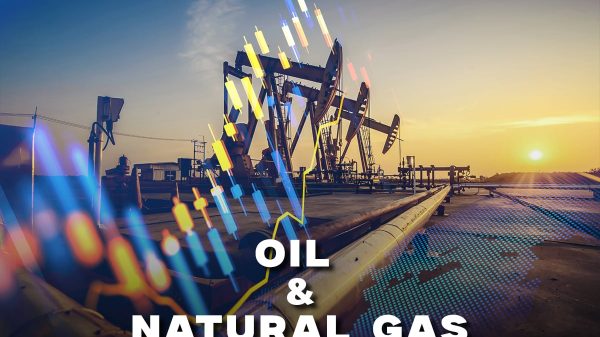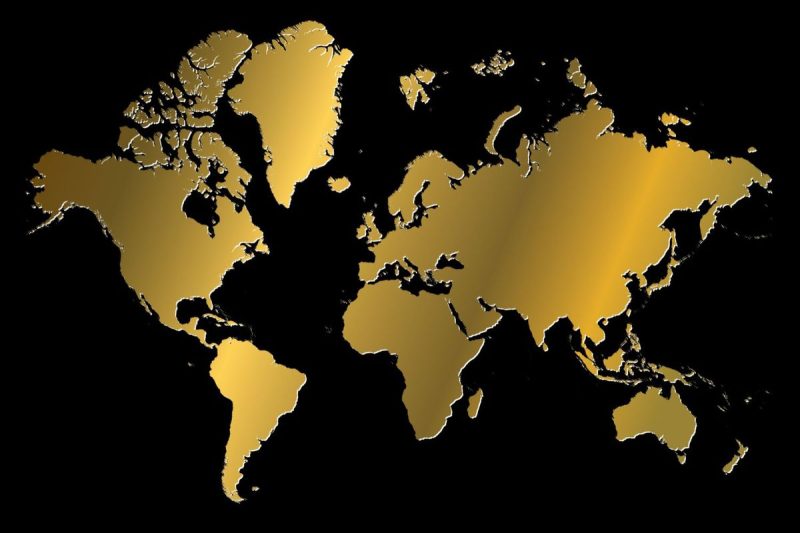The gold price has tracked higher in the past few years, sparking interest in the biggest producers.
Gains for the precious metal have come against a backdrop of turmoil caused by the COVID-19 pandemic, Russia’s invasion of Ukraine and rising interest rates as nations try to battle skyrocketing inflation.
These circumstances have prompted some investors to add gold to their portfolios as a safe-haven asset. However, according to the US Geological Survey, global production for 2022 was on par with output in 2021.
1. China
Mine production: 330 MT
While China’s gold output peaked at 455 metric tons (MT) in 2016, it hasn’t dipped below 300 MT in more than a decade and remained firm through the end of 2022. This consistent production continues to ensure the Asian nation’s status as the world’s top gold producer, a position it has held for more than a decade. The country accounts for an impressive 10.5 percent of global production and is the world’s biggest consumer of gold jewelry.
Despite encouraging foreign investment through the late 1990s and early 2000s, China’s gold-mining industry is dominated by state-owned operators. Some of the largest companies include China Gold International Resources (TSX:CGG,HKEX:2099), Shandong Gold (HKEX:1787) and Zijin Mining Group (HKEX:2899).
In addition to its mining operations, China is host to major gold smelting operations. The country’s Belt & Road Initiative has resulted in Chinese companies exploring and developing sites elsewhere in Asia and Africa, subsequently sending raw resources back to China for refinement.
2. Australia
Mine production: 320 MT
Gold production in Australia had another strong year in 2022, reaching 320 MT, up 5 MT from the previous year. Gold is mined at major operations in the country, with the top five gold mines all located in different states. The top-producing mine is Newcrest Mining’s (ASX:NCM,TSX:NCM,OTC Pink:NCMGF) Cadia mine in New South Wales.
Exploration activity in the Pilbara region of Western Australia has renewed interest and helped increase the country’s consistent gold output. While the Pilbara area is best known as one of the world’s largest producers of iron ore, it is currently in the midst of increased gold exploration and production thanks to a major discovery in 2017 by Novo Resources (TSXV:NVO,OTCQX:NSRPF) and Artemis Resources (ASX:ARV,OTCQB:ARTTF).
2. Russia
Mine production: 320 MT
Russia’s gold output has been rising over the past few years, increasing from 255 MT in 2017 to 320 MT in 2022. According to Statista, the country’s output is projected to reach nearly 400 MT by 2030.
The US Geological Survey states that Russian gold reserves stand at 6,800 MT, making it the second largest country for reserves after Australia. However, despite high production and reserves, Russian gold has had problems reaching world markets since the country’s invasion of Ukraine in February 2022. In response, Russian operators have sought out alternative markets, particularly the BRICS nations and other Asian countries like Kazakhstan.
4. Canada
Mine production: 220 MT
For 2022, gold production in Canada was down a marginal 3 MT from 2021, but the nation still managed to increase its status, moving up from its previous spot as the fifth largest producer of the yellow metal. Canada’s gold output has been on the rise in recent years, moving up from 175 MT in 2019.
Ontario and Quebec are the largest gold-producing provinces in the country; together, they represent more than 70 percent of Canada’s gold output. The Canadian government states that gold is the nation’s most valuable mined commodity, with C$13.7 billion worth of the precious metal produced in 2021.
Additionally, BC’s Golden Triangle is a hotbed for exploration. The region hosts Newcrest Mining’s Brucejack gold mine and Red Chris copper-gold mine, the latter of which is a 70/30 joint venture with Imperial Metals (TSX:III,OTC Pink:IPMLF). Junior companies like Goliath Resources (TSXV:GOT,OTCQB:GOTRF) have also made significant discoveries in the region, which has further fueled optimism about the region’s potential.
5. United States
Mine production: 170 MT
In 2022, the US produced 170 MT of gold, down by 17 MT from the previous year. The nation’s output has been dropping over the past five years and has fallen from 2017’s total of 237 MT. Last year, most US gold production came from more than 40 lode mines, several large placer mines in Alaska and a number of smaller placer mines in the Western US. The top 28 operations in the country were responsible for 98 percent of American gold output.
An assessment of US gold resources shows that the country has approximately 33,000 MT of gold in identified and undiscovered resources. According to the US Geological Survey, close to a quarter of the gold in undiscovered resources can be found in porphyry copper deposits. Gold reserves in the US are estimated at 3,000 MT.
6. Mexico
Mine production: 120 MT
Mexico has a long history of gold production; in fact, the Spanish colonization of Central America in the early and mid-1500s was largely targeting gold and silver. Today, Mexico has become a global leader for gold production, extracting more than 120 MT in 2022. Gold and silver combine for 50 percent of the country’s total metal output.
While much of Mexico’s gold output is controlled by foreign entities, one of the largest operations, the Herradura mine — owned by Mexico City-based Fresnillo (LSE:FRES,OTC Pink:FNLPF) — produced 350,000 ounces in 2022.
6. Kazakhstan
Mine production: 120 MT
Kazakhstan’s 2022 gold output of 120 MT represents a recent peak in the country’s production of the yellow metal, up from just 69 MT produced in 2016. Kazakhstan’s largest gold-mining operation is the Altyntau Kokshetau mine, which is owned by mining giant Glencore (LSE:GLEN,OTC Pink:GLCNF).
In August, Anglo-Russian company Polymetal International (AIX:POLY), one of Kazakhstan’s largest producers, delisted from the London Stock Exchange in a move geared at severing the link between its Kazakhstan and Russian subsidiaries; it did so in response to tensions resulting from Russia’s invasion of Ukraine. It remains listed on the Astana International Exchange in Kazakhstan, and has major operations in the country.
8. South Africa
Mine production: 110 MT
In 2022, South Africa produced 110 MT of gold, up by 3 MT from the previous year. About one-tenth of global gold reserves are located in the country, and its Witwatersrand Basin is one of the largest gold resources in the world.
South Africa has been one of the world’s top gold producers for decades, but between 1980 and 2018 the nation’s gold output fell by 85 percent. In recent years, South Africa has been the site of conflicts between the Association of Mineworkers and Construction Union (AMCU) and gold producers in the area. The AMCU has held many protests and strikes at several gold and platinum mines within the last few years in the hopes of garnering more wages and stopping any mergers that could cause job losses.
Power outages have been creating further strife for South Africa’s gold industry. Limited power generation in the country has created rolling blackouts, including for miners, the majority of which are connected to the nation’s power grid.
9. Peru
Mine production: 100 MT
Peru saw a slight uptick in gold production from last year, with output nudging up 3 MT to hit 100 MT in 2022. The Yanacocha mine, located 800 kilometers northwest of Lima, is the fourth largest gold mine in the world. In 2022, Yanacocha produced 244,000 ounces of gold for owner Newmont (NYSE:NEM,TSX:NGT).
Illegal gold mining continues to be a struggle for the country and has been responsible for the devastation of land, including patches of the precious Amazon forest. However, recent efforts to legitimize smaller artisanal operations have cut into illegal gold trade in the country. Legal artisanal operations with environmentally friendly operations can receive Fairmined Ecological Gold certification, which gives buyers a way to identify operations that are working in a sustainable way to protect the local ecology. It also helps limit the market for criminal operations.
9. Uzbekistan
Mine production: 100 MT
Gold has been mined in Uzbekistan since its discovery in the 1950s. Following the fall of the Soviet Union in 1991, mining for the yellow metal fell to its all-time lows in the mid-1990s. In 2019, the country’s government announced renewed investment into development and exploration, with the goal of more than doubling its gold production by 2022 and significantly increasing its reserves. However, Uzbekistan has maintained output of 100 MT over the past few years.
Operated by Navoi Mining and Metallurgical Company, the Muruntau gold mine is one of the largest gold mines in the world. Massive deposits of gold were first discovered at the site in the 1950s, and it still holds some of the largest reserves in the world at 4,500 MT. The mine produces more than 2.5 million ounces of gold per year and is expected to continue operating into the 2030s.
FAQs for gold investing
Which country has the most gold?
Australia holds the world’s largest gold reserves at 8,400 MT, followed by Russia at 6,800 MT.
Which nation is the largest owner of gold?
The country with the largest central bank gold reserves is the US, which had 8,133.5 MT as of September 2022. Most US central bank gold is held in deep storage in Denver, Fort Knox and West Point.
How much gold is mined each year?
Gold production is fairly consistent. In 2022, gold mine production worldwide came in at approximately 3,100 MT, which is nearly on par with the gold mined each year since 2016.
How is gold mined?
Gold is mined by several different methods, including: placer mining, hard-rock mining, by-product mining and by processing gold ore. The method a gold-mining company chooses depends upon the size, location, geological model and metallurgy of the deposit in question.
What is the production cost of gold?
The cost of producing gold varies from one miner to the next, and is reported as the all-in sustaining cost (AISC). AISC was first introduced in 2013 by the World Gold Council. Deposit type, energy costs and inflation are the factors that have the largest impact on AISC. The average AISC for the entire gold industry is calculated by averaging the production costs of the largest gold producers. The average AISC fluctuates with changes in energy costs and inflation.
Securities Disclosure: I, Dean Belder, currently hold no direct investment interest in any company mentioned in this article.


































